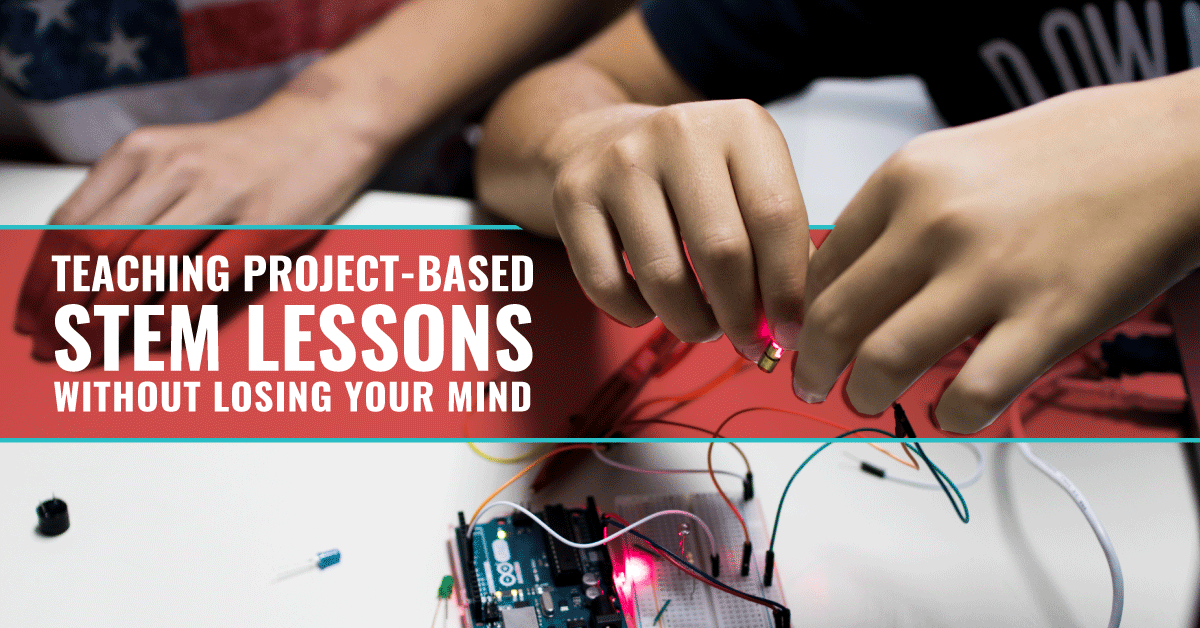So….
What Is STEM Education?
If you read or watch the news, every once in awhile you hear about how American children are far behind other countries when it comes to math and science education.
It’s not because these subjects are boring, it’s because American educators don’t know how to make these subjects fun for younger ages.
That’s where you come in, Mom and Dad!
You can make science and math fun.
It’s important for your youngsters to have a solid foundation in science, technology, engineering and math, collectively called STEM.
The younger you pique their interests, the sooner your children’s minds turn to solving problems related to interacting with the physical world around them.
Why Is STEM Important?
The U.S. Department of Commerce notes that the American economy depends on STEM careers to move forward.
Occupations related to STEM fields should grow 17 percent from 2008 to 2018, versus just 9.8 percent for every other kind of occupation.
As more and more technology takes over the world, you can expect the number of STEM jobs to increase all over the globe.
Plus, STEM jobs pay higher because of the expertise needed to fill those positions.
A better chance at a fulfilling, higher-paying career is one major reason why you should interest your children in STEM subjects.
Think of careers related to computer technology and computer programming.
Those wonderful apps you see on your smartphone that let you research the question…
“How on Earth am I going to teach STEM in homeschool this year?” don’t just magically appear on your phone’s screen.
Someone has to program the app to talk to your phone properly.
 Someone else designs the software for the phone, while another group of people use STEM expertise to build the hardware of the phone.
Someone else designs the software for the phone, while another group of people use STEM expertise to build the hardware of the phone.
Someone who has knowledge about creating apps for mobile devices starts at a salary of . $97,000 per year
That’s an entry-level position right out of a four-year college, not someone who spent 20 years in the industry or went to graduate school for another eight years.
Because technology is growing so fast in the global economy, so are STEM jobs.
Another reason to encourage your children with STEM involves the process behind the learning in these subjects.
STEM education creates critical thinkers who look at complex problems and then try to solve them.
Think of Sir Isaac Newton as a critical thinker.
He tried to determine, mathematically, how apples fell out of trees.
His physical laws and formulas provide the keys for NASA scientists to send probes to other planets, and they also govern how doctors perform brain surgery on a patient.
Without a critical thinker such as Newton, the world may not have the high-tech wizardry of modern science.
Critical thinkers solve problems beyond just STEM issues.
STEM-based principles could create solutions to world hunger, mental illness, public policy and socio-economic issues that make news headlines every night.
A solid STEM background creates wonderful all-around students even if your youngster chooses a non-STEM field for a career.
Problem solvers can get through life with more independence and more confidence.
STEM and Homeschool Statistics
Before we take you on a whirlwind journey about your STEM homeschool curriculum, here are some statistics about what you’re about to get into with your child.
Don’t worry, they’re just numbers related to math skills, or the same math skills you need to teach your kids during their homeschool years.
According to the 2011 Department of Commerce report, STEM workers made 26 percent more than their non-STEM counterparts.
In 2010, one in every 18 jobs were STEM-related positions.
Imagine that gap changing as more and more companies rely on tech-related things to innovate their products and services.
Two-thirds of STEM workers have college degrees, versus just one-third of non-STEM workers.
STEM workers with a degree earn more money, regardless of whether they work in a STEM field after graduation.
The college degree and an advanced education is where homeschooling comes into play with these types of careers.
 In general, homeschooled kids are better suited for college. Around two-thirds, or 66.7 percent, of homeschool kids who attend college graduate from an institute of higher learning.
In general, homeschooled kids are better suited for college. Around two-thirds, or 66.7 percent, of homeschool kids who attend college graduate from an institute of higher learning.
This compares to 57.5 percent of their fellow students. Add to that more than 2 million homeschooled students and rising in the United States, and you’ve got a recipe for many highly intelligent, well-adjusted and brilliant scholars headed to college.
Do you feel any pressure yet, Mom and Dad?
At least the weight of the world isn’t on your shoulders.
U.S. students finished 27th in math and 20th in science out of 34 countries based on numbers from the Organization for Economic Cooperation and Development.
The United States ranks 48th in terms of the quality of math and science education.
By the end of 2018, America’s workforce could be short 3 million highly skilled STEM workers needed to fill key positions in hundreds of companies.
The demand for STEM jobs is there, but there just aren’t enough people interested in those kinds of careers.
If more homeschools kids, maybe even your children, turn to STEM careers, just think of the success these students could have brightening everyone’s world with their innovations!
Now, it’s time to talk about how you can make your youngster’s light bulb go off thanks to the concepts of math, science and engineering.
Who knows?
You might learn a few things along the way, too.
STEM Resources: Where to Find & How to Get Them
Remember when we talked earlier about all of that high technology that forms the basis of many STEM jobs in the United States?
Some of that technology can help you find the resources you need to make your child’s STEM curriculum something fun and enjoyable.
Curriculum
The curriculum for STEM refers to the course of study for your child.
For example, a math curriculum for kindergarten might include the basics of counting, addition, subtraction, easy word problems and basic shapes.
For science, you might consider talking about the most observable things your child deals with every day, such as light, sound, water, gravity and the like.
Engineering is the same way, so go through things like how someone builds a house, how a car drives and what it took to make that fabulous dinner the family cooked last night.
Technology is, perhaps, an easy lesson on the basics of using a computer and how to use a smartphone.
The National Education Association (NEA) recommends seven curricula and three teacher-centered resources to help develop STEM lessons for children through 12th grade.
The first resource on the list, Exploratorium, is the website for a children’s science museum in San Francisco.
The teaching and learning tools section contains hundreds of possibilities for your child to learn about geometry, earth science and the human body.
Exploratorium prides itself on providing hands-on activities, so check out what you can do with a CD, a drop of water and a piece of paper.
Another resource from the NEA is Kinetic City, a website of games for third through fifth graders that focus on science and engineering. Get to know the animated characters and places of Kinetic City as your children explore cars, electricity and the earth.
This website requires a registration.
Once you figure out what to teach your children over the course of a school year, it’s time to make lesson plans!
STEM Education Lesson Plans and Fun Stuff to Do
Many states require homeschool parents to teach science and math during a school year.
Not every state requires formal lesson plans, but having a written idea of what you teach and when is a prudent course of action, but most especially with STEM, as you monitor your children’s progress.
A written lesson plan for STEM also makes it easier on you, Mom and Dad, as you learn STEM alongside your kids.
The beauty of homeschooling comes into play when you have age-appropriate lesson plans.
You have the freedom to call upon whatever resources you want.
If you don’t know much about dinosaurs, but the local museum has a class on dinosaurs geared towards children, incorporate that class as part of your overall lesson plan.
Who doesn’t like going to a museum to learn cool stuff?
A second aspect of homeschooling includes inquiry-based learning.
If you discuss the basics of electricity with your child and then he or she has a question about the sun, you can start answering questions about the big yellow ball in the sky until your child feels like moving onto the next subject.
Go with what works for you and your family, because the possibilities for lesson plans and their tangents are literally endless.
STEM Home Education Projects
It’s one thing to talk about the sun, how plants grow, how bread bakes, what makes a car go fast or what happens when your finger touches a metal doorknob and the sparks fly.
It’s another thing entirely to demonstrate the physical concepts behind a STEM principle.
There’s where hands-on projects become the most fun for STEM learning in the home.
Incorporate Hands-On Learning
Back to the inquiries your children may have about certain subjects, let’s talk about incorporating hands-on learning for your kids.
Your child eats his or her favorite vegetable one night and asks, “Mommy, where do carrots come from?”
That sounds like a great idea for a science experiment!
It’s time to buy some carrot seeds, a few small plastic pots and some soil.
Explain to your child that growing carrots takes time, but with the right nutrients, water and warmth from the sun, you can have home-grown carrots after several weeks.
Studies prove time and again that hands-on learning makes abstract lessons stick.
It’s even better when your child has a personal connection to the lesson. When you grow your child’s favorite vegetables in a home garden, he or she remembers that for a lifetime.
How Projects Teach Your Child
STEM projects around your house teach your child one main idea: science, technology, engineering and math are all around us, and every minute of every single day we come in contact with something dealing with one of these subjects.
It’s like the Force from “Star Wars,” these concepts are everywhere even though they may seem invisible.
When you embark on your STEM education journey, it’s important to realize that anyone can be a scientist or engineer.
All it takes is a great learning experience and continued reinforcement of these educational foundations.
There’s no greater teaching arena than the home when it comes to science.
What is capillary action you ask?
Place a celery stalk in a glass of red-colored water and watch how the food coloring inches up the celery stalk after a few days.
How does oil in your car work?
Grab some cooking oil in the kitchen and demonstrate how it softens the contact point between a fork and frying pan.
What about the warming effects of the sun?
Take a thermometer and measure the floor where a sunbeam hits and compare that to a spot on the floor without direct sunlight. (Did you explain what temperature is, too?)
You get the idea.
Those are three quick experiments to do with everyday, ordinary objects that you already have in your house.
Imagine what you can do when you tap into resources found all over the internet!
Make a battery with a potato, create static electricity with paper and a balloon, and blow bubbles in the bathtub to demonstrate several scientific concepts.
Home Advisor has a ton of awesome resources that help you engage your youngsters’ minds.
All of these cool experiments sound great, but then reality sets in just like when you receive bills in the mail. How do find time to do all of this, and how much money do you need to spend?
STEM Education Obstacles & How to Avoid Them
This is where one downside to homeschooling comes into play.
A public school system has much more financial resources than the average American household.
A middle school science teacher has a budget to buy chemistry sets, models of the solar system and goggles to wear during the volcano experiment.
What are the Costs to STEM Education?
The costs of some components aren’t too bad when you do some experiments.
Creating a volcano at home doesn’t break the bank too much since you probably already have vinegar, baking soda and some kind of kid’s modeling clay in the house.
However, you probably don’t have wires with alligator clips, some circuit panels and a small fan to make an awesome battery-powered desk fan from scratch.
You can’t exactly dig for dinosaur bones in the backyard, either, but there are cool kits that miniaturize that activity as part of a paleontology experiment.
You also may not understand that a $50 Bunsen burner is probably just as good as a $300 one.
Your experiments, no matter what age level, don’t have to be high-end to teach good STEM principles.
Learn to convert what you have on hand into something useful for an experiment.
An empty egg carton can incubate seeds. An old t-shirt makes a great way to test your sense of smell or to create a colorful design that shows the seven basic colors of the rainbow.
Just like altering a recipe for cooking (which teaches chemistry), you can alter the experiments to fit your needs and your lifestyle. The best educational resources show you what you can substitute.
What to Purchase for STEM Education?
In addition to the costs of supplies you don’t have, there’s also not knowing how to select the best project to work on because there are so many resources.
A Google search for STEM homeschool supplies generates 711,000 results!
How do you make sense of all of this stuff?
You can’t read all of those pages in one sitting.
How do you determine which resources and supplies are legit?
You want to buy from educational supply experts as opposed to some random dude deciding to play with fire in his backyard. (Never play with fire, kids. Smokey Bear says so.)
Fortunately, there are several well-known companies that specialize in supplying things for science experiments. You can have supplies delivered straight to your door in just a few days.
Confusing Directions in STEM Education
Once you get the items you need, you might also be confused by the directions of the experiment.
One website says to bring the water temperature up to 100 degrees Celsius while the other says 212 degrees Fahrenheit.
Which one is it? (Hint: those are both the same as the boiling point of water.)
You don’t want to accidentally feed your blossoming carrot plants potash when the experiment called for potassium.
Much like the hundreds of suppliers, there could be hundreds of ways to perform one simple experiment.
With all of these endless possibilities, where do you start?
What are STEM Education Solutions?
A little extra research into supply companies can give you an idea as to which ones are good and which ones aren’t.
Look at the About Us page of each company to view the company history. (coaf coaf ours!)
Has the business been around for 40 years?
Does the company list some of its major clients?
It never hurts to ask around for ideas.
Call the local public school system or college and find out where they get supplies for their STEM curricula.
Local homeschool groups are another great resource because parents may pool their money to buy several supplies in bulk for many kids at once.
Bulk supplies are generally cheaper than buying science experiment supplies for just one or two students.
Even after investigating these avenues for buying STEM education supplies, there is another cool option for parents who want to make STEM learning fun.
You’ve probably heard of loot crates by now (hint Creation Crate it this!).
These are packages that arrive at your home once per month by mail.
What’s inside remains a mystery until you open the box.
The company sending the crate gives you a general idea of what to expect, but not necessarily the specifics so there’s a bit of a surprise.
There’s a loot crate for STEM learning that can help make it even more fun for your youngster to learn about science, technology, engineering and math.
Imagine opening a loot crate to find electronic components for some awesome homeschool project.
You can even make the formal homeschool lesson plan a “Surprise” in the recordkeeping book.
Finding tutorials and components can be intimidating to people that want to teach STEM education.
Luckily, Creation Crate created a simple way for you to get started in electronics – all from home!
Creation Crate sends you new DIY electronics projects straight to your doorstep every month.
Build things like a Mood Lamp, Memory Game, Distance Detector, and more! Projects get more difficult each month as your skills improve.
See what Creation Crate can do for your homeschool curriculum today.

















